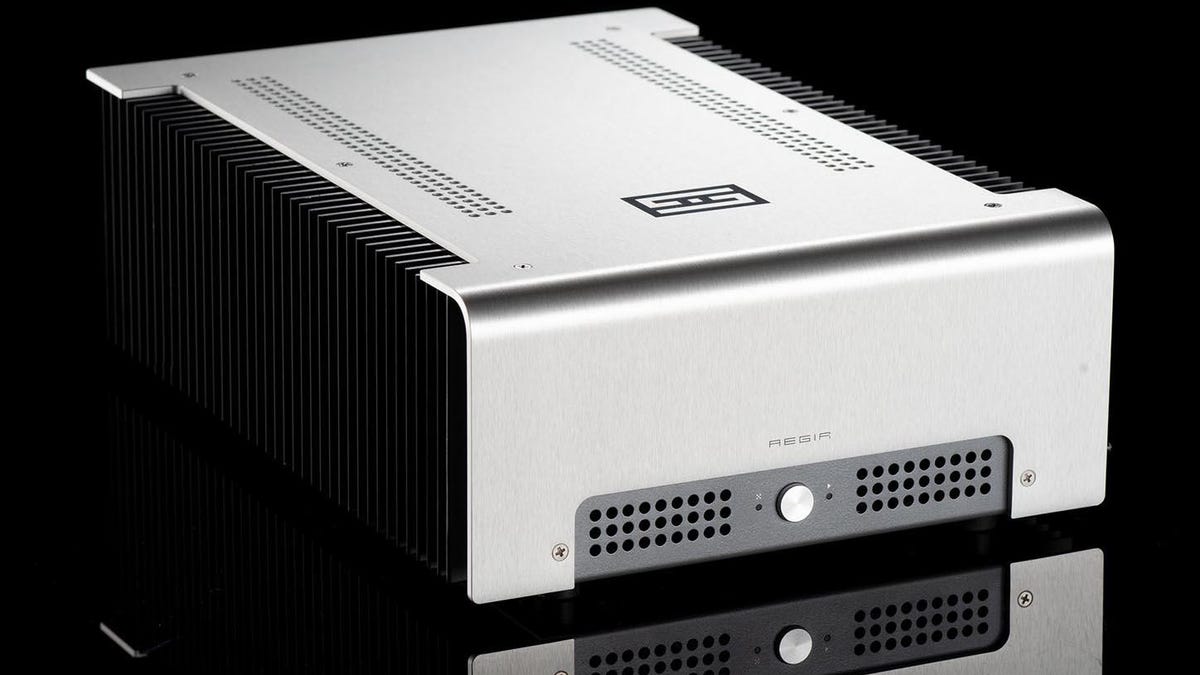Schiit’s little amplifier punches way above its weight
The Audiophiliac comes away mightily impressed by the Schiit Aegir amp.

The Schiit Audio Aegir amp.
Picture an audiophile amplifier and what do you see? A big bruiser that hogs too much living space and costs a bloody fortune. Schiit Audio broke the mold with its Aegir amp. It's small, solidly built and sounds like a bona fide high-end amp. The price is right too.
The Aegir is $799 in the US, £800 in the UK, and AU$1,299 in Australia. It looks like a near twin of the Schiit Vidar ($699, £700, AU$1,199), but while Vidar is a 100 watt per channel stereo amp, the more-expensive Aegir is just 20 watts per channel. What's up with that?
While the two amps appear similar, the Aegir is the more sophisticated design, and to my ear it sounds better than the Vidar up to medium loud volume levels. Not everybody wants maximum loud, or can get away with that, so for them putting sound quality ahead of sound quantity makes a lot of sense.
I'm getting ahead of myself. Let's first get into the numbers. The Schiit website claims, "Aegir uses an exotic current-feedback topology, as well as a 100 percent linear power supply (with 7 separate voltage rails and 600VA transformer) and microprocessor oversight to eliminate capacitors and DC servos in the signal path." That's tech speak for a rather advanced design not typically seen in such an affordable amp. Easier to understand numbers include power ratings of 20 watts per channel into 8 ohms, doubling to 40 watts per channel into 4 ohms. For 4 or 8 ohm speakers, the Aegir's first 10 watts per channel are pure Class A watts, from 10 to 20 watts Schiit describes the power as "Class A like" watts. Meaning they don't conform to the strict definition of Class A designs. I have no way to verify any of that, but I will say the Aegir is the best sounding Schiit product I've tested.
The Schiit Audio Aegir amp's rear panel.
If you need more oomph, buy two Aegirs, run each one as a mono amplifier, and get four times the power: 80 watts into 8 ohm speakers.
Aegir is smaller than most high-end amps, a mere 9 by 13 by 3.9 inches (229x330x99mm), but it weighs a hefty 27 pounds (12.2 kg). Even with the Aegir's finned heat sinks running the full lengths of the chassis sides, the amp runs warm to the touch, so don't plan on tucking this amp away inside a closed cabinet.
The amp's rear panel hosts a set of beefy looking gold-plated speaker cable binding posts, stereo RCA inputs and a single XLR input for use when an Aegir is run as a mono amp (the RCA inputs are only used for stereo operation). The front panel power button toggles between standby and power on settings.
The Aegir isn't just assembled in the US. The chassis, circuit boards, transformers, assembly, etc. are sourced from US suppliers. The Aegir is sold with a 15-day home trial and a 5-year warranty.
The Aegir is a power amp and must be matched with a preamp. Schiit's Jotunheim, Saga or Freya preamps will be fine partners for use with the Aegir. Or it can be used with any other brand's stereo preamp.
Is 20 watts per channel enough?
That depends on how loud you listen, the size of your room, the sensitivity of your speakers, and the music genres you enjoy. Big rooms soak up more power than small rooms, and high sensitivity speakers need less power to play at a given volume level than lower sensitivity speakers.
I split my Aegir listening sessions between two sets of speakers, the low sensitivity KEF LS50 and high sensitivity Klipsch Forte III speakers. Fueled by the Aegir, the LS50's sound took on a burnished glow, with the tone richer and sweeter than I'm used to. Stereo imaging was superb, that's what the LS50 is known for, but paired with the Aegir there's more depth and body to the sound of vocalists and instruments on acoustic music.
Still, playing Wilco's A Ghost is Born album loud was a different story. Aegir put a lid on the dynamics and bass definition, and switching back over to the more powerful Vidar restored the music's life. At more moderate volume level the Aegir sounded better, the mix opened up, and the sound of cymbals and percussion were superior so resolution of subtle details were revealed.
I also noted that Vidar thinned out the sound on Ethel's (a string quartet) self-titled first album, forfeiting the strings harmonic richness I heard from the Aegir. The difference between the two amps wasn't subtle. That said, the Vidar is by far the more powerful amp, and with insensitive speakers like the LS50s playing loud, the advantage in sound quality shifts over to the Vidar.
With the easier to drive Klipsch Forte III speakers, the Aegir played louder with ease, and the sound was much livelier with saxophonist Charles Lloyd's iconic Forest Flower LP. This music moves gracefully with Keith Jarrett on piano, Cecil McBee on bass, and Jack DeJohnette on drums. Dynamics were excellent, so the music had real visceral power, and that's a rare occurrence with amps in the Aegir's price class.
The Forte IIIs synergy with Aegir was manifest in the way it sweetened the speakers sound, adding a fuller and rounder tone to the music. The amp's control over the Forte III's 12-inch (305mm) woofers was never in doubt, but it didn't reach as forcefully into the deepest bass octaves as a $4,000 First Watt J2 amp did, and that model delivers just 25 watts per channel! It may have been outclassed but the Aegir got awfully close for a fraction of the price.
Schiit's on a roll: a revised version of their Ragnarok integrated amp and the first Schiit turntable are coming soon. Watch this space.

